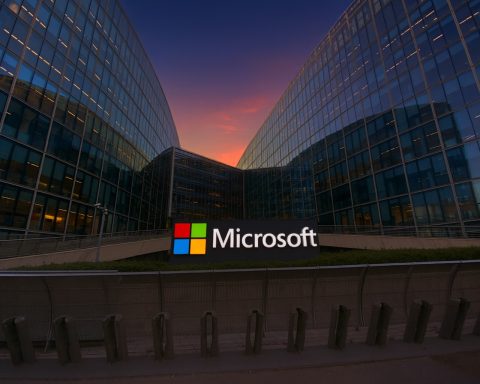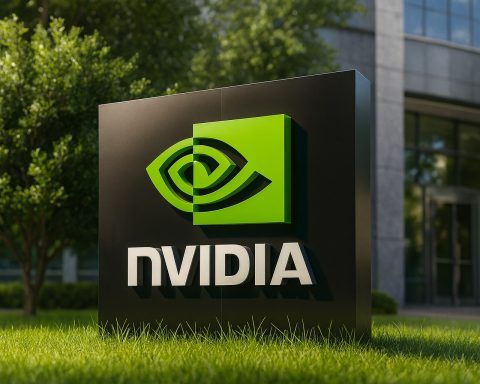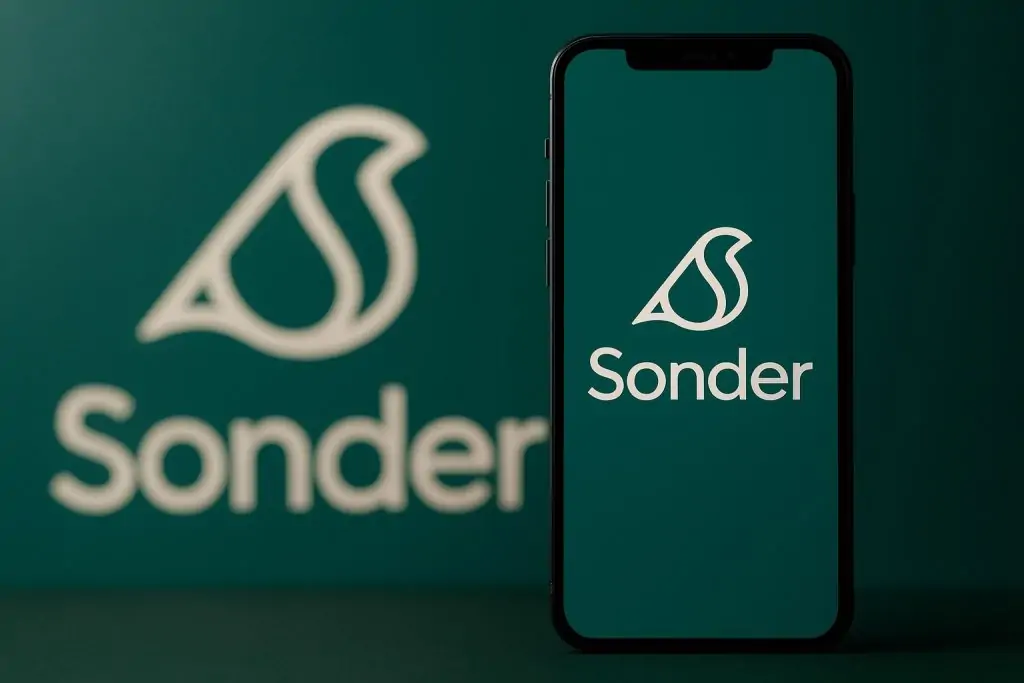Mobile-health Network Solutions (NASDAQ: MNDR), the Singapore-based AI-powered telehealth and digital health platform behind the MaNaDr app, jumped back into the market’s spotlight today after announcing plans to acquire two AI‑optimized data centers in Malaysia in a deal valued at up to US$120 million. The news triggered a powerful pre‑market rally in the company’s thinly traded shares on Thursday, November 20, 2025. [1]
Below is a full breakdown of all the key MNDR news items dated November 20, 2025, plus context from recent company developments to help readers understand what today’s move could mean for the stock and for the broader AI healthtech story.
What MNDR Announced: AI‑Optimized Data Centers in Malaysia
According to an auto‑generated brief summarizing a new company filing, Mobile-health Network Solutions has entered into a Memorandum of Understanding (MOU) with PPG PP GRID SDN. BHD. to acquire two AI‑optimized data centers in Malaysia. [2]
Key details from the MOU:
- Transaction size: Up to US$120 million
- Payment structure: Consideration to be paid via the issuance of 3,000,000 Class A ordinary shares of MNDR
- Asset type: Two AI‑optimized data centers located in Malaysia
- Strategic aim: To strengthen MNDR’s AI‑powered health and technology ecosystem and expand its digital infrastructure footprint. [3]
The agreement is currently structured as an MOU, which means it is a framework for a proposed transaction rather than a fully binding, completed acquisition. Execution will typically depend on due diligence, definitive documentation, and regulatory and commercial approvals.
MNDR has positioned the move as a way to bring compute and data infrastructure closer to its AI health stack, which includes its proprietary Phi GPT clinical AI model and AI‑driven tools that support telemedicine workflows and patient engagement. [4]
Why AI Data Centers Matter for an AI HealthTech Platform
At first glance, a telehealth company moving into data centers might look like a pivot—but for MNDR, it is being framed as a logical step in the build‑out of its AI Health Operating System:
- The company already runs a 360‑degree healthcare ecosystem under the MaNaDr brand, covering teleconsultations, e‑pharmacy, health e‑commerce and virtual clinic infrastructure. [5]
- In 2025, MNDR launched Phi GPT, its own large language model tuned for clinical care pathways, alongside AI tools like AI Checker and AI Notes to support doctors’ documentation and decision support. [6]
- It has also signed regional partnerships, such as a joint‑venture MOU with Ghana’s Jospong Group to deploy its AI‑powered digital health platform in West Africa. [7]
AI‑intensive health workloads—ranging from triage chatbots and clinical summarization to population‑level analytics—can be compute‑heavy and latency‑sensitive. Bringing dedicated, AI‑optimized data centers into the stack potentially allows MNDR to:
- Host inference workloads for its clinical AI models closer to end users
- Offer white‑label AI health infrastructure to hospitals, governments and corporate clients
- Reduce reliance on third‑party cloud providers for critical workloads, possibly improving cost control and data‑sovereignty positioning in Asia
The move also places MNDR into a broader regional race for AI data center capacity. Malaysia has become a hotbed for data center investment by global tech giants, even as the government is introducing new frameworks and tighter controls to manage power, land use and national strategic interests. [8]
That backdrop makes MNDR’s proposed acquisition strategically interesting—but also not without execution risk.
How the Market Reacted: MNDR’s Wild Pre‑Market Swing
The strongest same‑day market reaction to the news came in pre‑market trading on November 20:
- A Reuters brief reported that MNDR shares jumped about 125% to US$4.05 in pre‑market trading, explicitly linking the move to the announcement of the AI data center deal in Malaysia. [9]
- Benzinga’s pre‑market movers list also flagged MNDR among the top healthcare gainers, noting that shares climbed around 78–128% in early trading, with pre‑market quotes cited between US$2.96 and US$3.78, and a market value in the low‑single‑digit millions of dollars. [10]
- Live quote aggregators such as Webull and others similarly showed MNDR among the day’s most volatile small‑cap movers on the back of the Malaysia announcement. [11]
By early afternoon (UTC), real‑time equity data showed MNDR trading around US$1.66, indicating that a significant portion of the pre‑market spike had faded, underlining how quickly sentiment can swing in a thinly traded micro‑cap name.
The context matters: prior to today, MNDR’s share price had been under heavy pressure, with one news brief noting the stock was down roughly 87% year‑to‑date before the AI data center announcement. [12]
For traders and longer‑term investors alike, today’s action is a reminder that:
- Headline‑driven micro‑caps can move violently on relatively modest flows
- Pre‑market moves don’t always translate into similar regular‑session gains
- Liquidity and spread risk remain significant in a stock with a very small market capitalization
All the Other MNDR News You Need to Know Today (20.11.2025)
For November 20, 2025, the core MNDR news flow consists of:
- AI-Optimized Data Center MOU in Malaysia
- Source: TipRanks‑curated company announcement based on a new MNDR filing
- Key points: Two AI‑optimized data centers in Malaysia; consideration up to US$120m via 3 million Class A shares; aim is to deepen MNDR’s AI‑driven healthtech infrastructure. [13]
- Reuters/Refinitiv Market Report on Share Price Reaction
- Headline carried on TradingView and other platforms: “Shares of Mobile-health more than double on AI data center deal”
- Key points: Pre‑market share price jump to about US$4.05 (+~125%); notes the stock had been sharply down year‑to‑date prior to the news. [14]
- Benzinga Pre-Market Movers – Healthcare
- Article lists MNDR among the top healthcare gainers in Thursday’s pre‑market session, citing large percentage moves and updated micro‑cap valuation figures. [15]
These three items comprise the main public news references dated November 20, 2025 specifically about MNDR. Other key MNDR developments that are driving interpretation of today’s announcement—such as FY2025 results, the at‑the‑market (ATM) equity program, and insider buying—come from earlier in 2025 and are summarized below.
Insider Confidence: Co‑CEO Teoh Pui Pui Adds to Her Stake (17.11.2025)
Just days before the Malaysia data center news hit the tape, MNDR disclosed insider buying by one of its top executives:
- On November 17, 2025, the company announced that Dr. Teoh Pui Pui—co‑founder, co‑CEO, COO and chair of the board—purchased additional Class A ordinary shares in an open‑market transaction funded with personal money. [16]
- A Schedule 13D filing shows that she bought shares equivalent to about 0.4% of outstanding Class A shares on November 5, 2025, for roughly US$8,751. [17]
- Following the purchase, Dr. Teoh beneficially owns around 110,596 Class A shares, or approximately 9.5% of the company’s Class A stock as of November 14, 2025. [18]
MNDR framed the transaction as a signal of management’s confidence in the company’s long‑term growth prospects and strategic direction—a narrative many investors will now weigh against the substantial equity issuance implied by the Malaysia data center MOU. [19]
How MNDR Got Here: FY2025 Results, AI Pivot and Funding Moves
To understand why the market cares about today’s news, it helps to look at the company’s 2025 reset.
FY2025 Results: Revenue Down, Loss Narrowed
On October 31, 2025, MNDR reported results for its fiscal year ended June 30, 2025:
- Revenue: Approximately US$7.6–7.7 million, down about 45% year‑on‑year, largely due to exiting legacy clinic operations and shifting to an asset‑light virtual‑care model. [20]
- Net loss: Narrowed to roughly US$3.4 million, compared with about US$15.6 million in FY2024, helped by cost controls and the move to a leaner operating model. [21]
- Strategy: Management emphasized a shift toward an AI‑driven health operating system, focused on software, AI tools and partnerships rather than owning brick‑and‑mortar clinics. [22]
The company also flagged ongoing going‑concern risks and the need for additional financing to support growth, a point that looms large when assessing any US$120 million, equity‑funded transaction. [23]
Reverse Split and ATM Program
In parallel, MNDR has been restructuring its capital base:
- 1‑for‑5 reverse stock split: Effective September 25, 2025, reducing outstanding shares from roughly 4.7 million to about 937,000 and helping the company regain compliance with Nasdaq listing requirements. [24]
- US$300 million At-the-Market (ATM) equity facility: Launched in July 2025 to provide flexible access to capital for AI‑driven healthcare and pharmacy expansion, especially in high‑growth emerging markets. [25]
- US$900,000 strategic investment from Indopacific (September 2025): A targeted share subscription intended to support the proposed acquisition of Indonesia‑based Lifepack and MNDR’s broader Indonesia strategy. [26]
Taken together, these steps show a company leaning heavily on the equity markets to fund an ambitious AI healthtech rollout. Today’s Malaysia data center MOU fits squarely into that pattern of capital‑intensive expansion funded with stock issuance.
Strategic Fit: From Telehealth App to AI Infrastructure Player?
MNDR’s recent product and partnership roadmap helps explain why the company sees owning or controlling AI‑optimized data centers as a logical move:
- MaNaDr Health Operating System: A platform connecting patients, doctors, pharmacies and employers via teleconsults, e‑pharmacy, online health stores and virtual clinics. [27]
- Phi GPT and AI Checker / Aiko Companion:
- Phi GPT: a proprietary large language model designed for clinical workflows, using retrieval‑augmented generation and doctor‑validated medical corpora. [28]
- Aiko: an AI‑powered health companion that sits inside MNDR’s ecosystem, offering personalized engagement while, according to the company, retaining data within a closed system. [29]
- Ghana JV and Africa Expansion: Joint venture MOU with Jospong Group in Ghana to roll out AI‑powered digital health services across a population the partners frame as a high‑growth, under‑served market. [30]
Layering AI‑ready data centers in Malaysia on top of this stack could allow MNDR to:
- Host latency‑sensitive AI inference near major Southeast Asian markets
- Offer infrastructure‑plus‑software packages to governments and large enterprises
- Position itself in the broader AI + healthcare + data infrastructure narrative that has captivated investors globally
However, it also moves the company further into the capital‑intensive world of data center ownership and operations, an arena dominated by deep‑pocketed hyperscalers and specialized infrastructure funds.
Key Risks and Open Questions After Today’s News
For readers and potential investors trying to interpret today’s headlines, several open questions and risk factors stand out:
- Execution Risk on the MOU
- An MOU is not a completed acquisition. There is still deal‑completion risk, including due diligence outcomes, final valuation, regulatory approvals in Malaysia, and potential changes in market conditions. [31]
- Dilution and Capital Structure
- Regulatory Environment in Malaysia
- Malaysia is actively reshaping its data center policies, introducing frameworks and, in some instances, tightening controls on new capacity and power usage to manage environmental and strategic constraints. [34]
- For a smaller player like MNDR, navigating permitting, power availability and potential geopolitical sensitivities will be non‑trivial.
- Operational Complexity
- Running or integrating AI‑optimized data centers demands expertise in facilities engineering, power management, security and cybersecurity—capabilities that go beyond MNDR’s historical core in telemedicine and health software. [35]
- Financial Resilience
- With FY2025 revenue down sharply yet losses narrowing, MNDR is in a transition phase where its AI‑first strategy must start to drive sustainable growth to justify additional capital deployment and leverage. [36]
As always, none of this guarantees future performance, but it highlights why today’s headline will likely be viewed both as an opportunity and a test for MNDR’s business model.
What to Watch Next
Over the coming weeks and months, observers will be watching for:
- A definitive agreement replacing the MOU, with more granular details on the Malaysian data centers (location, capacity, existing customers, power contracts, etc.). [37]
- Updated capital plans, including how MNDR intends to balance ATM issuance, strategic investors and potential debt to finance the transaction while managing dilution. [38]
- Operational milestones on Phi GPT, Aiko, AI Checker and the Ghana JV, which will indicate whether the AI‑driven health operating system is gaining real‑world traction. [39]
- Trading and liquidity dynamics in MNDR’s stock, especially if additional news flow continues to attract speculative interest into a still‑small float. [40]
Bottom Line
For November 20, 2025, Mobile-health Network Solutions (MNDR) is firmly back on the radar thanks to its proposed US$120 million acquisition of AI‑optimized data centers in Malaysia and the resulting surge in its volatile micro‑cap stock.
The announcement fits logically into MNDR’s broader AI healthtech pivot, anchored by its MaNaDr platform, proprietary clinical AI models and international partnerships. At the same time, the deal magnifies questions around dilution, execution risk and financial resilience for a company that is still working through a multi‑year reset.
For readers following digital health, AI infrastructure or small‑cap healthcare equities, MNDR is now a name to watch closely—but also one where volatility and risk remain very high.
This article is for informational purposes only and does not constitute investment, legal or tax advice. Always do your own research or consult a licensed professional before making financial decisions.
References
1. www.tipranks.com, 2. www.tipranks.com, 3. www.tipranks.com, 4. www.newsfilecorp.com, 5. www.hl.co.uk, 6. www.newsfilecorp.com, 7. www.finanznachrichten.de, 8. www.reuters.com, 9. www.tradingview.com, 10. www.benzinga.com, 11. www.webull.com, 12. www.tradingview.com, 13. www.tipranks.com, 14. www.tradingview.com, 15. www.benzinga.com, 16. markets.financialcontent.com, 17. www.stocktitan.net, 18. www.stocktitan.net, 19. www.stocktitan.net, 20. www.stocktitan.net, 21. finance.yahoo.com, 22. www.newsfilecorp.com, 23. www.fastbull.com, 24. www.stocktitan.net, 25. lifesciencereport.com, 26. lifesciencereport.com, 27. www.hl.co.uk, 28. www.newsfilecorp.com, 29. www.stocktitan.net, 30. www.finanznachrichten.de, 31. www.tipranks.com, 32. www.tipranks.com, 33. lifesciencereport.com, 34. www.reuters.com, 35. www.marsh.com, 36. www.stocktitan.net, 37. www.tipranks.com, 38. lifesciencereport.com, 39. www.newsfilecorp.com, 40. coincodex.com








